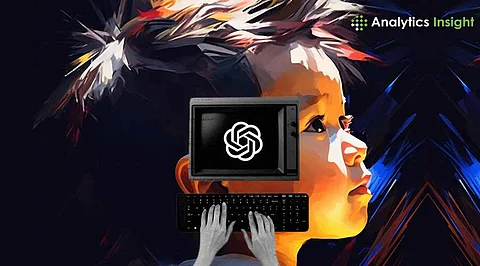

Artificial intelligence is fast revolutionising the creative universe, defying conventional artistic methods and triggering debates about authenticity, originality, and human creativity’s role. OpenAI’s ChatGPT, which is driven by the GPT-4o model, recently added an image-generation capability that can create artwork in a wide range of styles, including the iconic Studio Ghibli style. This has fuelled an international controversy: Can AI actually match the magic of hand-drawn animation, or is it simply making high-quality facsimiles lacking in artistic spirit?
Ever since ChatGPT introduced a new capability of generating images, users have been initiating to create images invoking Studio Ghibli, rich landscapes with form features and warm, nostalgic colours. A wildfire of social media from adoration fans is rained by the speed of the technology without ear and winning regard. Surprisingly, this has hit the growing number of users of ChatGPT. The reports have it that castles were built on engagement numbers immediately after the roll-out of this feature, proving that the public had a genuine interest in this technological revolution.
Studio Ghibli is synonymous with hand-drawn animation, stories imbued with the spirit of Ghibli, and visuals that touch your heart. While AI art, including anything from ChatGPT, has come a long way, it should never even try to stand up to Ghibli as a living soul of art, human emotion, and multilayered story. Instead, AI can in some instances produce better images than Ghibli, in terms of:
Speed and scalability: AI can create high-quality artwork in a matter of minutes, while hand-drawn animation would take months or years. This makes AI a perfect choice for quick prototyping or fast iteration on several styles.
Infinite variability: AI can provide infinite variations for an image in different styles, thus making experimentation impossible for a human artist considering time constraints.
Photorealistic and hyper-stylised details: In AI, we can create really realistic textures as well as lighting-effects details perhaps even more realistic than Ghibli’s softer hand-painted style.
Adaptive, customisable art: AI-generated images can adjust on-the-fly according to user preferences, making it a perfect tool for individual content design.
Easy fusion of multiple styles: AI can now merge styles from Ghibli with other influences for new hybrids, something that traditional artists might find challenging.
For an average person, AI-generated Ghibli-like arts may induce awe, whereas, for Studio Ghibli co-founder and master animator Hayao Miyazaki, artificial intelligence in the creative realm ought to have no mercy. In a viral clip from the 2016 documentary The Red Turtle, Miyazaki is seen watching an AI-generated animation and, with utter disdain, called it ‘an insult to life itself.’
Miyazaki, whose every film is painstakingly animated through the hand-drawn technique, has always held art as an arena steeped in life as testified by human emotion and experience. For him, animation is not just about technical proficiency; storytelling and culture come into play, as does, arguably most importantly, an intimate connection with the medium, which he feels AI cannot ever accomplish.
The replication of Studio Ghibli’s art style by AI has sparked ethical and legal concerns. While copyright laws protect specific works, they do not necessarily prevent the imitation of an artistic style. This legal grey area complicates efforts to regulate AI-generated content that closely resembles established creative works.
Moreover, issues also arise regarding the trade training of AI models. If AI-generated Ghibli-style images are generated based on datasets that include copyrighted content, this may raise legal hurdles for platforms that use such models. Specialists believe that the speedy evolution of AI technology has surpassed current copyright laws, and new regulations are needed to deal with these new issues.
The prevalence of AI art has again prompted debates on the authenticity of art. On the one hand, therefore, it is said that AI can only simulate the aesthetics while not possessing the human experience and the intentionality and emotional depth associated with a work considered to be a masterpiece. Even if a beautiful image has been created by an AI programme, is this image equally significant artistically as that of a sketch drawn, with all its carefulness and imperfections, by a human artist?
A rebuttal to the classical pro-colonisation of art argument would insist that AI is simply another medium, the brush and computer screen, animation programs included, among the many others that have changed the creative market. Others embrace AI as an augmenting tool for their art; starting with AI and running with ideas generated by it protects human creativity.
In time, the line that separates machine-output work from that made from human hands seems to be getting more blurred with the advancing technologies of AI. Nevertheless, while ChatGPT shows its image-generation capabilities and presents some great things that can already be done with it, a possibility of blocking anything from coming between traditionalism and innovation in the art-making of anime films generally because machine techniques will potentially result in more cultural depth and emotional width-is still open.
But what is still missing from AI is the artistic intention, a grounded storytelling depth, and the human touch that casts that spell of ‘magic’ in Ghibli’s art. No matter how much AI compromises in making one’s creative oeuvre, it will never offset the skill and heart worked into that magical art by famous studios such as Ghibli. How society will choose to implement such tools into the artistic process will point the direction for the futuristic art of AI. Will AI be an adjunct to the ingenuity of man or, as many feel, a threat to age-old techniques of art-making? As the legal, philosophical, and ethical arguments shape up, one fact is sure: the very heart of genuine art will never be but human experience and emotion, something that AI has yet to understand or duplicate.
